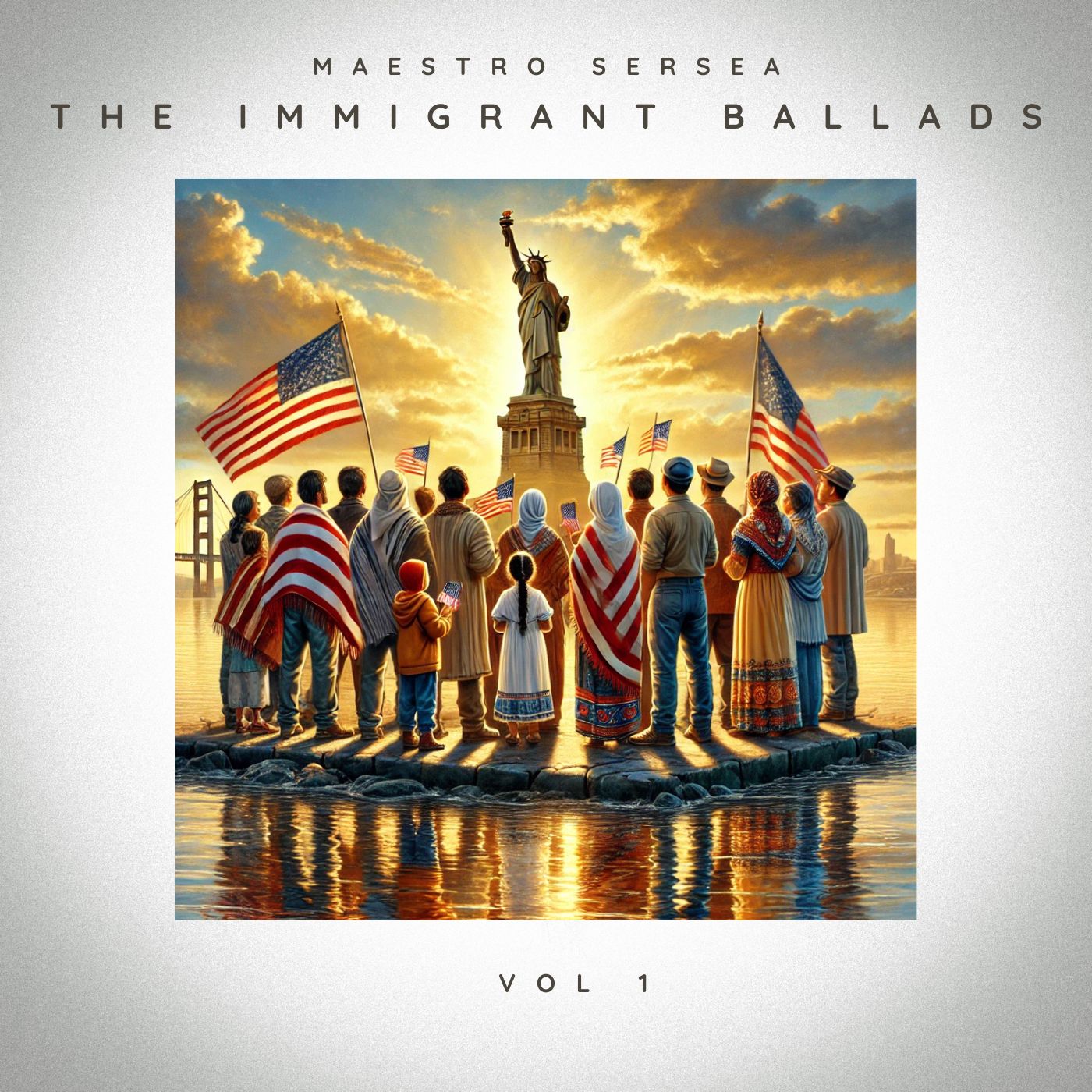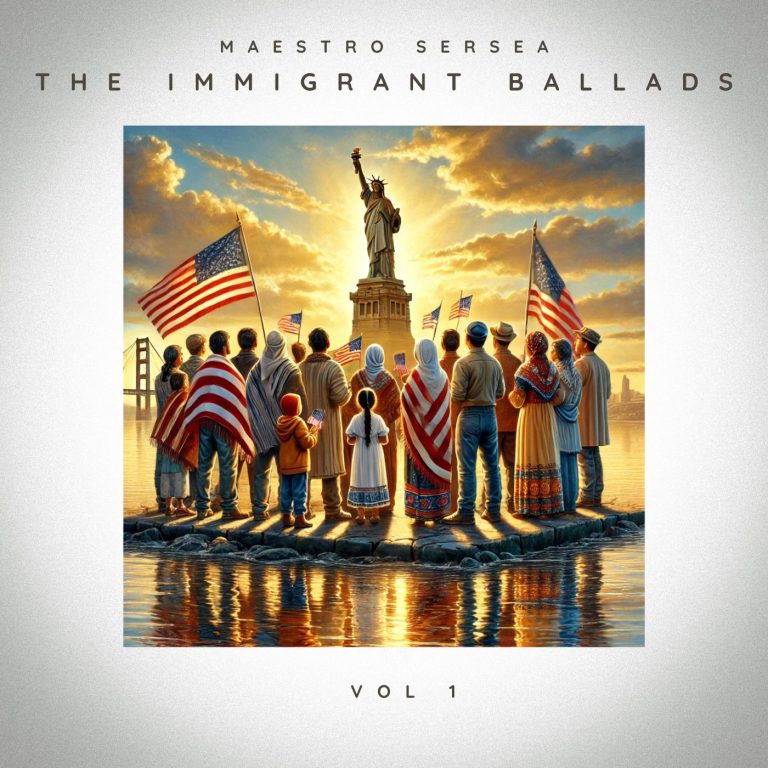
Album Cover for The Immigrant Ballads, Vol. 1 by Maestro Sersea
Lyrics:
[Verse 1]
Waking up early, sunrise on my mind,
Got a vision so bright, I’m leaving doubt behind.
With a heart full of hope and a plan in my hands,
I’m chasing down my dreams across these endless lands.
With every challenge faced, I’m growing strong,
On this path of hard work, I know I’ll belong.
[Chorus]
What are you willing to do?
For the American Dream waiting for you.
With determination, we’ll break those walls,
Study hard, rise above it all.
Get that diploma, reach for the sky,
We’ll write our stories, you and I.
[Verse 2]
Learning a trade, honing every skill,
In the classroom of life, I’m climbing that hill.
Practice makes perfect, gotta earn my way,
With sweat on my brow, building my future each day.
The world’s wide open, opportunities glow,
With responsibility in hand, I’m ready to grow.
[Chorus]
What are you willing to do?
For the American Dream waiting for you.
With determination, we’ll break those walls,
Study hard, rise above it all.
Get that diploma, reach for the sky,
We’ll write our stories, you and I.
[Bridge]
Step by step, we’re forging our path,
Holding on to dreams, the aftermath.
With every late night and rising sun,
We’ll prove to the world, we’ll get it done.
[Chorus]
What are you willing to do?
For the American Dream waiting for you.
With determination, we’ll break those walls,
Study hard, rise above it all.
Get that diploma, reach for the sky,
We’ll write our stories, you and I.
[Outro]
So let’s dare to dream, let’s dare to believe,
With passion and hard work, we can achieve.
The American Dream, it’s yours and it’s mine,
With responsibility and hope, we’ll always shine.
“The American Dream” – Analysis
A Motivational Call to Action
“The American Dream” pivots from personal narrative to inspirational anthem, directly addressing listeners with a challenge: “What are you willing to do?” Rather than passively celebrating opportunity, this song demands active participation, positioning the American Dream not as something granted but as something earned through deliberate effort and sacrifice.
Education as the Gateway
The song emphasizes education and skill-building as primary pathways to success. References to diplomas, classrooms, learning trades, and honing skills reflect a pragmatic philosophy: opportunity exists, but it requires investment in oneself. This speaks to immigrant communities where education is often viewed as the most reliable tool for advancement and intergenerational mobility. The song validates this approach while making it universally applicable.
Redefining Success Through Work Ethic
Notably absent is any suggestion of luck, inheritance, or systemic advantage. Instead, success emerges from “sweat on my brow,” late nights, and sunrise discipline. While this reflects genuine immigrant work ethics and determination, it also subtly positions success as purely meritocratic—a perspective that acknowledges effort while potentially underestimating structural barriers some face.
Collective Rather Than Individual
The repeated use of “we” and “you and I” transforms this from solo aspiration into collective endeavor. The song builds solidarity among listeners, suggesting that achieving the American Dream isn’t about individual competition but shared uplift. “We’ll write our stories” implies multiple valid paths and outcomes, not a single definition of success.
Hope Tempered With Realism
The song balances inspiration with honesty. It acknowledges “challenges faced” and demands “responsibility,” suggesting that dreams require more than wishful thinking—they demand accountability and perseverance through difficulty. This maturity prevents the song from becoming naive cheerleading.
Democratizing Aspiration
By framing the American Dream as available to “you and I,” the song democratizes opportunity. It’s not reserved for the privileged but accessible to anyone willing to invest in education and effort. For immigrant listeners especially, this affirms that despite different starting points, the pathway exists.
“The American Dream” ultimately functions as both promise and challenge—inspiring, yes, but conditional on the listener’s willingness to act.
